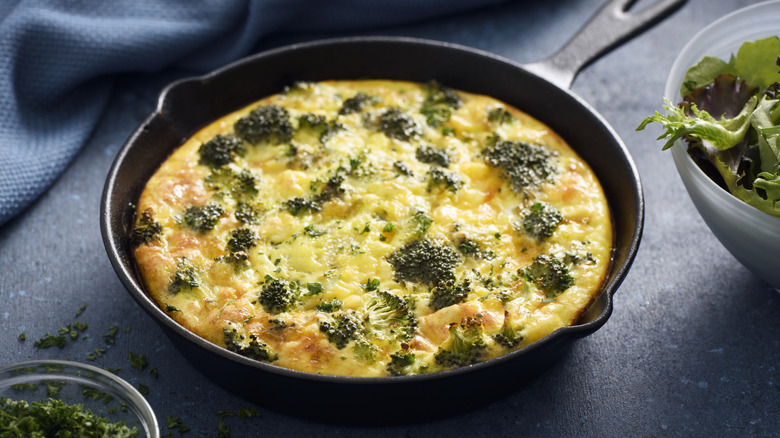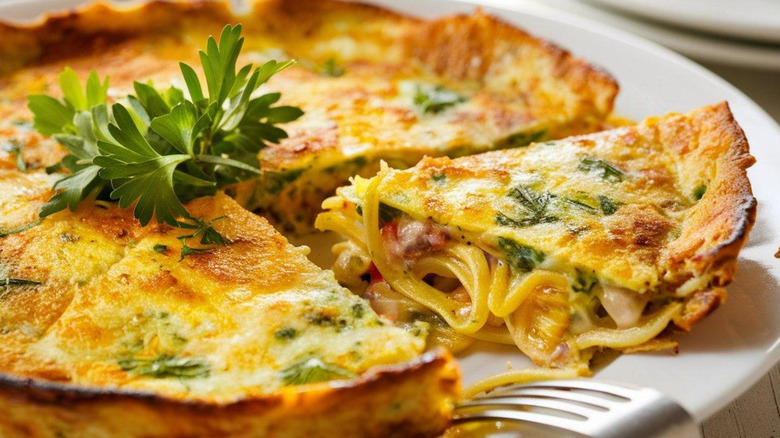The Only Ingredient Ratio Your Frittata Will Ever Need
Growing up in an Italian-American home, you eat your fair share of pasta, pizza, and other foods people typically think of as Italian. But one of my favorites had nothing to do with tomato sauce. Instead, it was a deliciously simple frittata with golden-fried sliced potatoes, caramelized onions, and nutty parmesan my Italian-born mother would whip up for light summer dinners. Frittatas land somewhere between omelets and quiche, an egg dish with fillings that has a slightly custardy texture created with the right balance of ingredients.
Nelson Serrano-Bahri, professional chef and director of innovation at the American Egg Board, spoke to The Takeout about how to nail the ingredient ratio for perfect frittatas every time. Serrano-Bahri told us that for every six eggs, he uses ½ cup heavy cream, 1 cup cheese, and 1½ to 2 cups fillings. He explained, "This ratio works because eggs provide structure and lift, cream adds richness and creates a custard-like texture, and cheese contributes fat, flavor, and a bit of structure as it melts."
The cream, which can be swapped for milk, makes several contributions to the frittata. "Cream (or milk) increases tenderness by diluting the egg proteins, preventing them from tightening too much during cooking; adds richness and a slightly custardy mouthfeel; and improves flavor by adding subtle sweetness and rounding out the egg flavor," Serrano-Bahri said. Other dairy products can also work, including half-and-half, cottage cheese, sour cream, yogurt, or crème fraîche. Use full-fat or 2% at minimum, or it won't have the same creaminess.
How to prep fillings and make the frittata
Use your imagination — and the leftovers in your refrigerator — to fill your frittata with vegetables, cooked or cured meats, and more. They even make frittatas with pasta in Campania, one of the regional Italian foods chefs think everyone should try. But the fillings can't be raw. Nelson Serrano-Bahri shared this: "Note that fillings — cooked vegetables, meats, herbs — should be precooked and well-drained to avoid watering down the mix."
Use the same cast iron or oven-safe, nonstick skillet to cook the fillings and then the frittata, while a separate sheet pan can make a bigger frittata for a crowd. Beat the eggs (make sure the ones in your fridge are still good), mix in the cream and cheese, and then pour the mixture over the fillings. If you're using a harder cheese that doesn't melt well, you can sprinkle it on top instead.
You can cook the frittata on the stove until partially set, then finish it in the oven or under a broiler. Some people use the oven for the whole cooking process, while others cook them entirely on the stove, flipping halfway through. To manage flipping a skillet-sized frittata, put a plate larger than the pan upside down over it, quickly flip so the plate is on the bottom, then slide the frittata with the uncooked side now down back into the skillet.
Frittatas can be served fresh from the oven or at room temperature any time of day, from breakfast to dinner to weekend brunch. You can take it on the go too, sandwiching a piece between slices of Italian bread or on a crusty roll.

